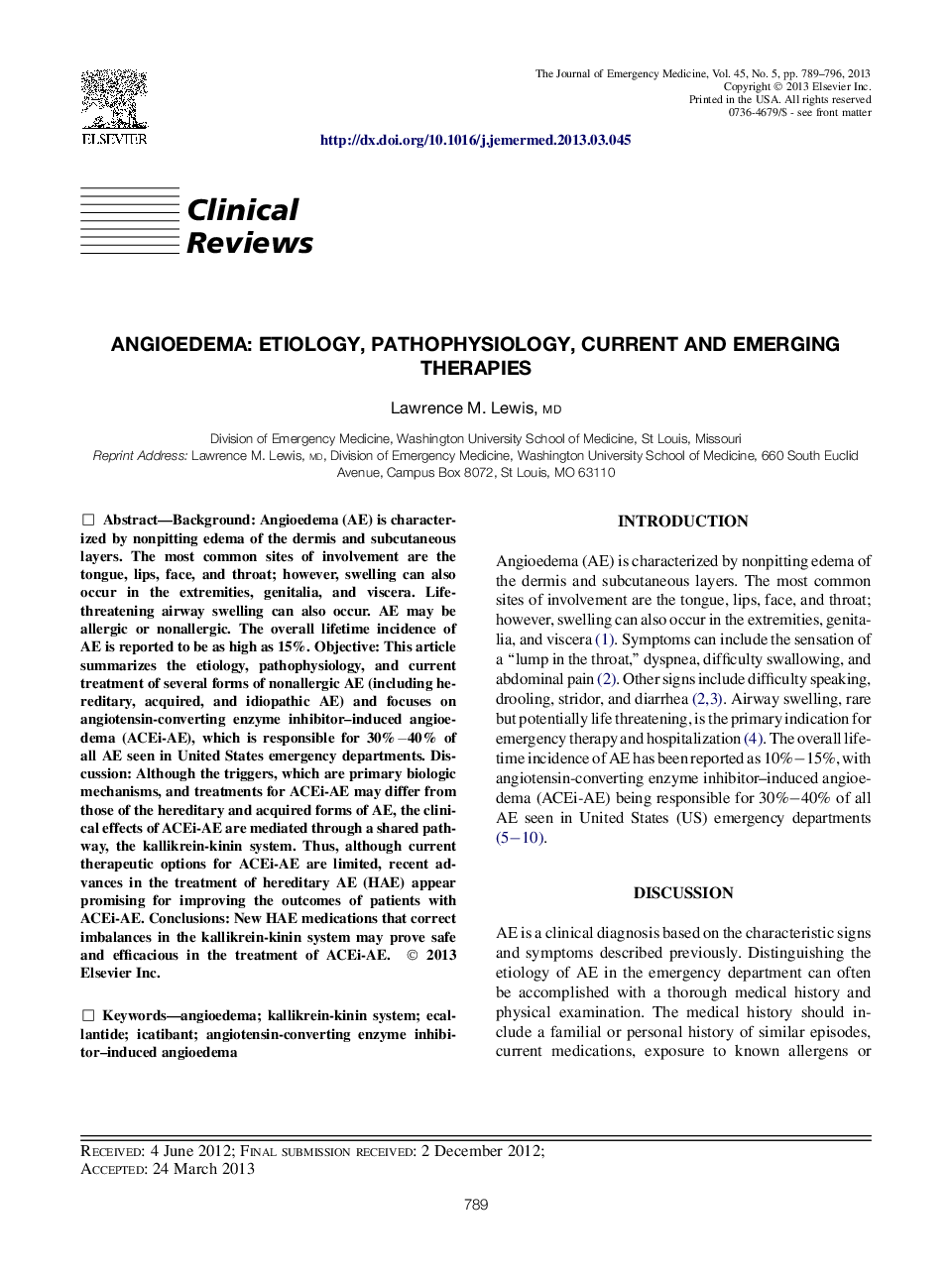| کد مقاله | کد نشریه | سال انتشار | مقاله انگلیسی | نسخه تمام متن |
|---|---|---|---|---|
| 3246899 | 1589143 | 2013 | 8 صفحه PDF | دانلود رایگان |

BackgroundAngioedema (AE) is characterized by nonpitting edema of the dermis and subcutaneous layers. The most common sites of involvement are the tongue, lips, face, and throat; however, swelling can also occur in the extremities, genitalia, and viscera. Life-threatening airway swelling can also occur. AE may be allergic or nonallergic. The overall lifetime incidence of AE is reported to be as high as 15%.ObjectiveThis article summarizes the etiology, pathophysiology, and current treatment of several forms of nonallergic AE (including hereditary, acquired, and idiopathic AE) and focuses on angiotensin-converting enzyme inhibitor–induced angioedema (ACEi-AE), which is responsible for 30%−40% of all AE seen in United States emergency departments.DiscussionAlthough the triggers, which are primary biologic mechanisms, and treatments for ACEi-AE may differ from those of the hereditary and acquired forms of AE, the clinical effects of ACEi-AE are mediated through a shared pathway, the kallikrein-kinin system. Thus, although current therapeutic options for ACEi-AE are limited, recent advances in the treatment of hereditary AE (HAE) appear promising for improving the outcomes of patients with ACEi-AE.ConclusionsNew HAE medications that correct imbalances in the kallikrein-kinin system may prove safe and efficacious in the treatment of ACEi-AE.
Journal: The Journal of Emergency Medicine - Volume 45, Issue 5, November 2013, Pages 789–796